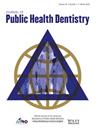Association between dental visits during pregnancy and setting for prenatal care
Abstract
Objectives
Federally Qualified Health Centers (FQHCs) may be well positioned to facilitate dental visits during pregnancy for low-income women. We sought to compare receipt of dental visits during pregnancy for women who received prenatal care at an FQHC versus a non-FQHC setting.
Methods
We analyzed Michigan Medicaid administrative data for all live birth deliveries between April 2018 and December 2020. We used billing data to categorize the predominant setting for prenatal care as occurring at a FQHC or a non-FQHC and claims data to identify dental visits during pregnancy (in the 9 months prior to delivery). We employed bivariate and multivariate analyses to explore the relationship between setting for prenatal care and dental visits during pregnancy.
Results
Women who received prenatal care at an FQHC versus non-FQHC had a higher proportion of dental visits during pregnancy (31.85% vs. 19.37%, p < 0.0001). In multivariate analyses, the strongest predictors of having a dental visit during pregnancy were FQHC prenatal care setting, having a dental emergency visit, having ≥3 prenatal visits, and having Medicaid coverage throughout pregnancy. Hispanic or Black race/ethnicity and 2020 delivery year were predictors of a lower likelihood of a dental visit. These predictors were consistent for the overall population and for the subset who had no dental visits pre-pregnancy.
Conclusion
Medicaid-enrolled women who receive prenatal care at an FQHC are more likely to have a dental visit during pregnancy than their counterparts who receive prenatal care in a non-FQHC setting.

 求助内容:
求助内容: 应助结果提醒方式:
应助结果提醒方式:


